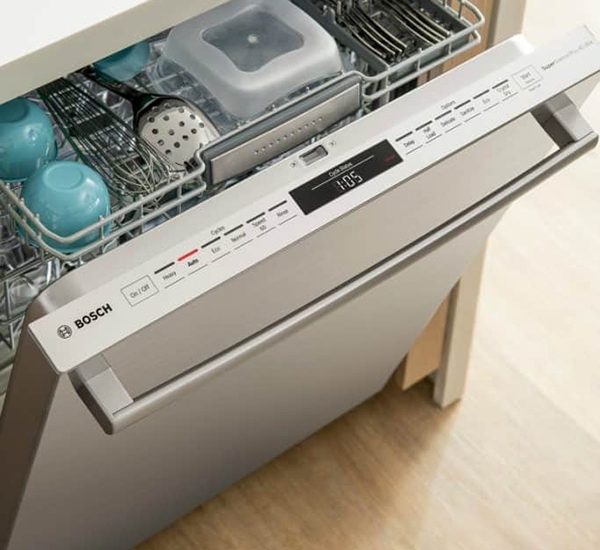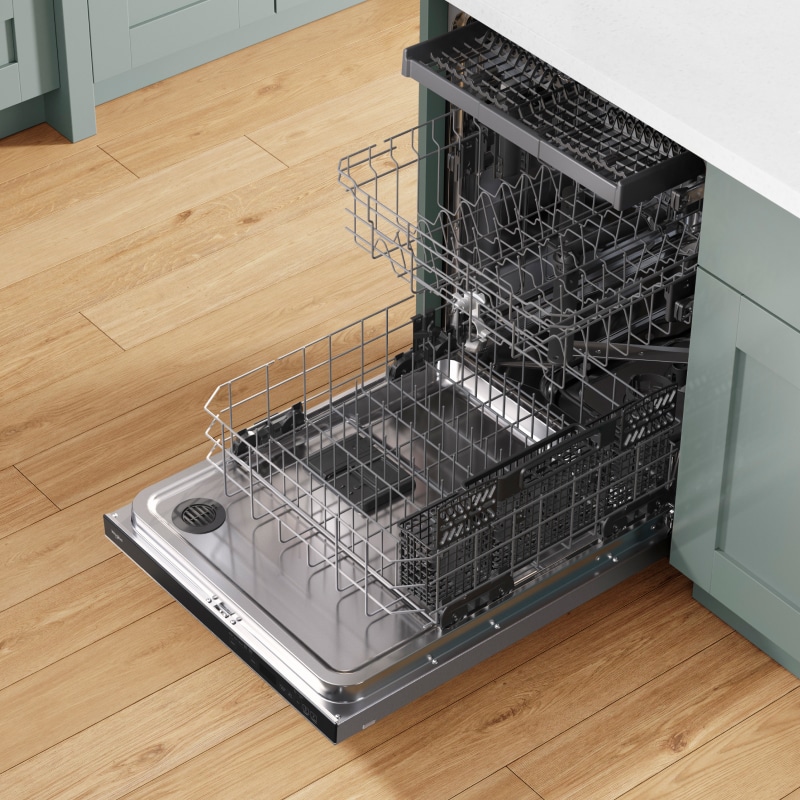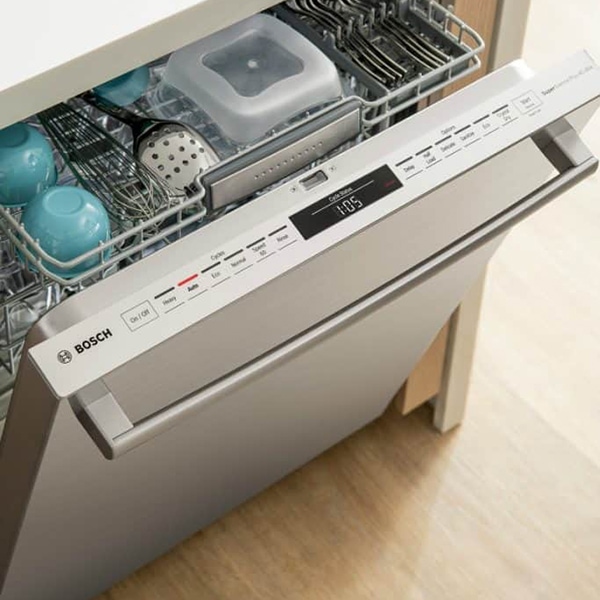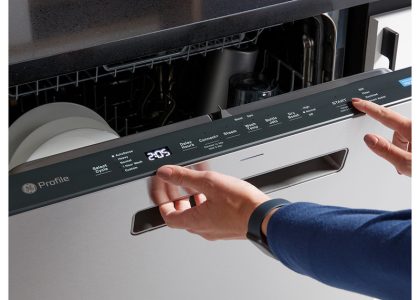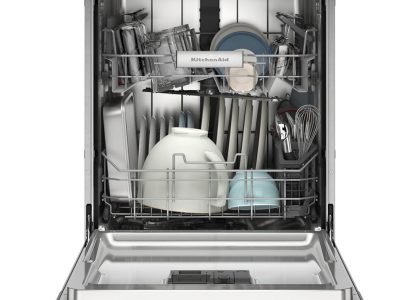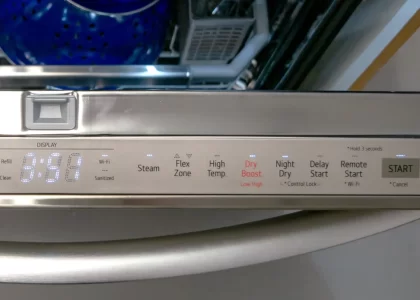Checking the Power Source
How to turn on dishwasher? Before diving into more complex troubleshooting steps, it’s important to check the basics. The power source is often overlooked but can be the root cause of your dishwasher failing to turn on.
Ensuring the Dishwasher is Plugged In
Start by making sure that your dishwasher is properly plugged into the electrical outlet. A loose or disconnected plug can prevent your dishwasher from receiving power. Gently push the plug into the outlet to ensure it’s secure. If the plug seems damaged, do not use it and consider replacing it.
Confirming Circuit Breaker Status
Next, inspect your home’s circuit breaker or fuse box. Look for any tripped breakers or blown fuses that might be affecting your kitchen appliances. If you find a tripped circuit breaker, flip it back to the ‘on’ position. For a blown fuse, replace it with a new one that matches the required amperage. After checking these, try to turn on your dishwasher again to see if the issue is resolved.
Loading the Dishwasher Properly
When it comes to how to turn on dishwasher and get it running efficiently, loading it correctly is critical. An improperly loaded dishwasher won’t perform at its best and could leave you with dirty dishes after every cycle. Here’s how to do it right.
Arranging Dishes for Optimal Performance
Start by placing larger items on the bottom rack, facing downwards so the water can reach every surface. Bowls and plates should go in the center, angled to allow water to drain. Position glasses and cups between the tines on the top rack to prevent them from flipping over and filling with water. Ensure all items are spaced apart to allow water and detergent to circulate freely.
Avoiding Overloading the Dishwasher
It’s tempting to cram in as many dishes as possible, but overloading your dishwasher is a surefire way to reduce its effectiveness. Leave enough space between items so that water and detergent can reach all surfaces. This prevents the need for a second wash, saving time, energy, and water. Check the dishwasher manual for loading tips specific to your model, as each dishwasher may have unique features or recommendations.
Operating the Control Panel
Control panels are central to figuring out how to turn on dishwasher units. A panel that’s not responding usually indicates a problem. Let’s review effective steps to manage controls and get the dishwasher started.
Selecting the Correct Cycle
Firstly, review the cycles your dishwasher offers. Each cycle serves a different purpose, from heavy washes for pots to gentle washes for glassware. Selecting the right one is vital. Make sure you are familiar with the control panel’s symbols. Consult your dishwasher’s manual if you’re unsure which cycle suits your load. Press the appropriate button to start the chosen cycle. If the dishwasher doesn’t respond, note the issue for further investigation.
Using Start or Power Buttons
Once the cycle is selected, the next step is to use the Start or Power button. This may involve pressing and holding the button for a few seconds. If lights don’t come on or if there’s no sign of power, double-check the power source again. A non-responsive control panel might need a reset. Most dishwashers can be reset by pressing and holding a specific button combination, or by turning off the power for a minute. If problems persist, document what is happening. This will help when seeking professional help or consulting the manufacturer’s support resources.
Door Latch Alignment and Function
A wrongly aligned door latch is a common reason dishwashers fail to start. Here’s how to handle it correctly.
Securing the Dishwasher Door
Ensure the door is firmly shut. If it feels loose or wobbly, check the latch for any obvious signs of misalignment or damage. If needed, adjust the latch or replace it to ensure a tight seal, which is essential for the dishwasher to operate.
Understanding Door Safety Mechanisms
Modern dishwashers are equipped with safety mechanisms that prevent the machine from running if the door is not properly latched. Familiarize yourself with your model’s safety features and confirm they’re functioning correctly. If the door mechanism seems to be intact but the dishwasher won’t start, consult your user manual for troubleshooting specific to your model or consider seeking professional assistance.
Inspecting for Functionality Issues
Troubleshooting how to turn on your dishwasher may lead to functionality checks. Look for common signs that could point to underlying issues.
Identifying Error Codes or Lights
Most modern dishwashers have built-in diagnostic systems. These systems use error codes or warning lights to indicate problems. When your dishwasher doesn’t start, check the display for such codes or lights. Refer to your user manual to decipher what they mean. If you see blinking lights or hear beeps, take note. These signals often point to specific issues that can guide your next steps.
Assessing Water Supply and Drainage
A functional water supply is crucial for your dishwasher to operate. Make sure the water valve under the sink is open. This allows water to flow into the dishwasher. If the valve is open but the dishwasher remains dry, a supply issue may exist. Next, check the drainage. Inspect the drain hose for kinks or clogs. Blocked drainage can trigger safety mechanisms that stop the dishwasher from starting. Ensure the hose pitches properly for effective water flow.
Dishwasher Maintenance
Routine upkeep is key in learning how to turn on dishwasher without hitches. Well-maintained appliances work better and last longer. Let’s review essential maintenance tasks.
Cleaning the Dishwasher Filter
A clean filter is vital for an efficient dishwasher. Over time, food particles and debris clog the filter, which can cause issues. First, locate the filter at the bottom of the machine. Refer to the manual if needed. Remove and wash the filter under running water. Use a soft brush to remove stubborn particles. Check and clean the filter regularly, as suggested by the manufacturer.
Regularly Checking for Clogs or Hoses Issues
Inspect hoses periodically for kinks or leaks. A blocked or damaged hose impairs water flow, leading to operational problems. Straighten any kinks in the hose. Replace it if you find cracks or leaks. Check for clogs in the spray arms and drainage system, too. Clear any debris you find to ensure smooth running. Regular checks can prevent major issues and help you understand how to turn on dishwasher units reliably.
Professional Help and Customer Support
At some point, self-troubleshooting your dishwasher may not be enough. If you’ve followed all the steps above and the dishwasher still fails to operate, it’s time to turn to the professionals. Knowing when and who to call can save you time and prevent further damage to your appliance.
When to Call a Technician
Call a technician if:
- You encounter complex electrical issues beyond your understanding.
- The control panel is unresponsive even after a reset.
- You find error codes that suggest internal problems.
- Water supply or drainage is not functioning, despite all efforts.
- The door latch is damaged and needs professional repair.
Act promptly to avoid water damage or electrical hazards. Keep a list of certified technicians and their contact information for quick access.
Utilizing Manufacturer Resources and Guides
Most dishwasher manufacturers provide online resources and guides. Use them to understand common problems and find troubleshooting tips.
Consider the following resources:
- The manufacturer’s website often has FAQs and manuals.
- Customer support hotlines can guide you through troubleshooting.
- Online forums may have discussions about similar issues.
Reach out to these resources for help. They can often solve your problem without the need for a service call.

